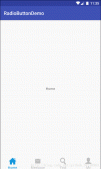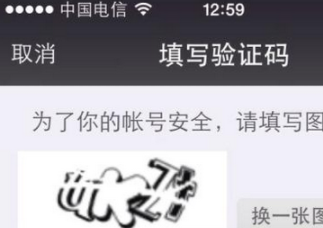今天这篇文章我们主要讲一下Android系统中的截屏事件处理流程。用过android系统手机的同学应该都知道,一般的android手机按下音量减少键和电源按键就会触发截屏事件(国内定制机做个修改的这里就不做考虑了)。那么这里的截屏事件是如何触发的呢?触发之后android系统是如何实现截屏操作的呢?带着这两个问题,开始我们的源码阅读流程。
我们知道这里的截屏事件是通过我们的按键操作触发的,所以这里就需要我们从android系统的按键触发模块开始看起,由于我们在不同的App页面,操作音量减少键和电源键都会触发系统的截屏处理,所以这里的按键触发逻辑应该是Android系统的全局按键处理逻辑。
在android系统中,由于我们的每一个Android界面都是一个Activity,而界面的显示都是通过Window对象实现的,每个Window对象实际上都是PhoneWindow的实例,而每个PhoneWindow对象都一个PhoneWindowManager对象,当我们在Activity界面执行按键操作的时候,在将按键的处理操作分发到App之前,首先会回调PhoneWindowManager中的dispatchUnhandledKey方法,该方法主要用于执行当前App处理按键之前的操作,我们具体看一下该方法的实现。
|
1
2
3
4
5
6
7
8
9
10
11
12
13
14
15
16
17
18
19
20
21
22
23
24
25
26
27
28
29
30
31
32
33
34
35
36
37
38
39
40
41
42
43
44
45
46
|
/** {@inheritDoc} */ @Override public KeyEvent dispatchUnhandledKey(WindowState win, KeyEvent event, int policyFlags) { ... KeyEvent fallbackEvent = null; if ((event.getFlags() & KeyEvent.FLAG_FALLBACK) == 0) { final KeyCharacterMap kcm = event.getKeyCharacterMap(); final int keyCode = event.getKeyCode(); final int metaState = event.getMetaState(); final boolean initialDown = event.getAction() == KeyEvent.ACTION_DOWN && event.getRepeatCount() == 0; // Check for fallback actions specified by the key character map. final FallbackAction fallbackAction; if (initialDown) { fallbackAction = kcm.getFallbackAction(keyCode, metaState); } else { fallbackAction = mFallbackActions.get(keyCode); } if (fallbackAction != null) { ... final int flags = event.getFlags() | KeyEvent.FLAG_FALLBACK; fallbackEvent = KeyEvent.obtain( event.getDownTime(), event.getEventTime(), event.getAction(), fallbackAction.keyCode, event.getRepeatCount(), fallbackAction.metaState, event.getDeviceId(), event.getScanCode(), flags, event.getSource(), null); if (!interceptFallback(win, fallbackEvent, policyFlags)) { fallbackEvent.recycle(); fallbackEvent = null; } if (initialDown) { mFallbackActions.put(keyCode, fallbackAction); } else if (event.getAction() == KeyEvent.ACTION_UP) { mFallbackActions.remove(keyCode); fallbackAction.recycle(); } } } ... return fallbackEvent; } |
这里我们关注一下方法体中调用的:interceptFallback方法,通过调用该方法将处理按键的操作下发到该方法中,我们继续看一下该方法的实现逻辑。
|
1
2
3
4
5
6
7
8
9
10
11
|
private boolean interceptFallback(WindowState win, KeyEvent fallbackEvent, int policyFlags) { int actions = interceptKeyBeforeQueueing(fallbackEvent, policyFlags); if ((actions & ACTION_PASS_TO_USER) != 0) { long delayMillis = interceptKeyBeforeDispatching( win, fallbackEvent, policyFlags); if (delayMillis == 0) { return true; } } return false; } |
然后我们看到在interceptFallback方法中我们调用了interceptKeyBeforeQueueing方法,通过阅读我们我们知道该方法主要实现了对截屏按键的处理流程,这样我们继续看一下interceptKeyBeforeWueueing方法的处理:
|
1
2
3
4
5
6
7
8
9
10
11
12
13
14
15
16
17
18
19
20
21
22
23
24
25
26
27
28
29
30
31
32
33
34
35
36
|
@Override public int interceptKeyBeforeQueueing(KeyEvent event, int policyFlags) { if (!mSystemBooted) { // If we have not yet booted, don't let key events do anything. return 0; } ... // Handle special keys. switch (keyCode) { case KeyEvent.KEYCODE_VOLUME_DOWN: case KeyEvent.KEYCODE_VOLUME_UP: case KeyEvent.KEYCODE_VOLUME_MUTE: { if (mUseTvRouting) { // On TVs volume keys never go to the foreground app result &= ~ACTION_PASS_TO_USER; } if (keyCode == KeyEvent.KEYCODE_VOLUME_DOWN) { if (down) { if (interactive && !mScreenshotChordVolumeDownKeyTriggered && (event.getFlags() & KeyEvent.FLAG_FALLBACK) == 0) { mScreenshotChordVolumeDownKeyTriggered = true; mScreenshotChordVolumeDownKeyTime = event.getDownTime(); mScreenshotChordVolumeDownKeyConsumed = false; cancelPendingPowerKeyAction(); interceptScreenshotChord(); } } else { mScreenshotChordVolumeDownKeyTriggered = false; cancelPendingScreenshotChordAction(); } } ... return result; } |
可以发现这里首先判断当前系统是否已经boot完毕,若尚未启动完毕,则所有的按键操作都将失效,若启动完成,则执行后续的操作,这里我们只是关注音量减少按键和电源按键组合的处理事件。另外这里多说一句想安卓系统的HOME按键事件,MENU按键事件,进程列表按键事件等等都是在这里实现的,后续中我们会陆续介绍这方面的内容。
回到我们的interceptKeyBeforeQueueing方法,当我用按下音量减少按键的时候回进入到:case KeyEvent.KEYCODE_VOLUME_MUTE分支并执行相应的逻辑,然后同时判断用户是否按下了电源键,若同时按下了电源键,则执行:
|
1
2
3
4
5
6
7
8
|
if (interactive && !mScreenshotChordVolumeDownKeyTriggered && (event.getFlags() & KeyEvent.FLAG_FALLBACK) == 0) { mScreenshotChordVolumeDownKeyTriggered = true; mScreenshotChordVolumeDownKeyTime = event.getDownTime(); mScreenshotChordVolumeDownKeyConsumed = false; cancelPendingPowerKeyAction(); interceptScreenshotChord(); } |
可以发现这里的interceptScreenshotChrod方法就是系统准备开始执行截屏操作的开始,我们继续看一下interceptcreenshotChord方法的实现。
|
1
2
3
4
5
6
7
8
9
10
11
12
13
14
15
|
private void interceptScreenshotChord() { if (mScreenshotChordEnabled && mScreenshotChordVolumeDownKeyTriggered && mScreenshotChordPowerKeyTriggered && !mScreenshotChordVolumeUpKeyTriggered) { final long now = SystemClock.uptimeMillis(); if (now <= mScreenshotChordVolumeDownKeyTime + SCREENSHOT_CHORD_DEBOUNCE_DELAY_MILLIS && now <= mScreenshotChordPowerKeyTime + SCREENSHOT_CHORD_DEBOUNCE_DELAY_MILLIS) { mScreenshotChordVolumeDownKeyConsumed = true; cancelPendingPowerKeyAction(); mHandler.postDelayed(mScreenshotRunnable, getScreenshotChordLongPressDelay()); } } } |
在方法体中我们最终会执行发送一个延迟的异步消息,请求执行截屏的操作而这里的延时时间,若当前输入框是打开状态,则延时时间为输入框关闭时间加上系统配置的按键超时时间,若当前输入框没有打开则直接是系统配置的按键超时处理时间,可看一下getScreenshotChordLongPressDelay方法的具体实现。
|
1
2
3
4
5
6
7
8
|
private long getScreenshotChordLongPressDelay() { if (mKeyguardDelegate.isShowing()) { // Double the time it takes to take a screenshot from the keyguard return (long) (KEYGUARD_SCREENSHOT_CHORD_DELAY_MULTIPLIER * ViewConfiguration.get(mContext).getDeviceGlobalActionKeyTimeout()); } return ViewConfiguration.get(mContext).getDeviceGlobalActionKeyTimeout(); } |
回到我们的interceptScreenshotChord方法,发送了异步消息之后系统最终会被我们发送的Runnable对象的run方法执行,这里关于异步消息的逻辑可参考:android源码解析之(二)–>异步消息机制
这样我们看一下Runnable类型的mScreenshotRunnable的run方法的实现:
|
1
2
3
4
5
6
|
private final Runnable mScreenshotRunnable = new Runnable() { @Override public void run() { takeScreenshot(); } }; |
好吧,方法体中并未执行其他操作,直接就是调用了takeScreenshot方法,这样我们继续看一下takeScreenshot方法的实现。
|
1
2
3
4
5
6
7
8
9
10
11
12
13
14
15
16
17
18
19
20
21
22
23
24
25
26
27
28
29
30
31
32
33
34
35
36
37
38
39
40
41
42
43
44
45
46
47
48
49
50
51
52
53
|
private void takeScreenshot() { synchronized (mScreenshotLock) { if (mScreenshotConnection != null) { return; } ComponentName cn = new ComponentName("com.android.systemui", "com.android.systemui.screenshot.TakeScreenshotService"); Intent intent = new Intent(); intent.setComponent(cn); ServiceConnection conn = new ServiceConnection() { @Override public void onServiceConnected(ComponentName name, IBinder service) { synchronized (mScreenshotLock) { if (mScreenshotConnection != this) { return; } Messenger messenger = new Messenger(service); Message msg = Message.obtain(null, 1); final ServiceConnection myConn = this; Handler h = new Handler(mHandler.getLooper()) { @Override public void handleMessage(Message msg) { synchronized (mScreenshotLock) { if (mScreenshotConnection == myConn) { mContext.unbindService(mScreenshotConnection); mScreenshotConnection = null; mHandler.removeCallbacks(mScreenshotTimeout); } } } }; msg.replyTo = new Messenger(h); msg.arg1 = msg.arg2 = 0; if (mStatusBar != null && mStatusBar.isVisibleLw()) msg.arg1 = 1; if (mNavigationBar != null && mNavigationBar.isVisibleLw()) msg.arg2 = 1; try { messenger.send(msg); } catch (RemoteException e) { } } } @Override public void onServiceDisconnected(ComponentName name) {} }; if (mContext.bindServiceAsUser( intent, conn, Context.BIND_AUTO_CREATE, UserHandle.CURRENT)) { mScreenshotConnection = conn; mHandler.postDelayed(mScreenshotTimeout, 10000); } } } |
可以发现这里通过反射机制创建了一个TakeScreenshotService对象然后调用了bindServiceAsUser,这样就创建了TakeScreenshotService服务并在服务创建之后发送了一个异步消息。好了,我们看一下TakeScreenshotService的实现逻辑。
|
1
2
3
4
5
6
7
8
9
10
11
12
13
14
15
16
17
18
19
20
21
22
23
24
25
26
27
28
29
30
31
32
|
public class TakeScreenshotService extends Service { private static final String TAG = "TakeScreenshotService"; private static GlobalScreenshot mScreenshot; private Handler mHandler = new Handler() { @Override public void handleMessage(Message msg) { switch (msg.what) { case 1: final Messenger callback = msg.replyTo; if (mScreenshot == null) { mScreenshot = new GlobalScreenshot(TakeScreenshotService.this); } mScreenshot.takeScreenshot(new Runnable() { @Override public void run() { Message reply = Message.obtain(null, 1); try { callback.send(reply); } catch (RemoteException e) { } } }, msg.arg1 > 0, msg.arg2 > 0); } } }; @Override public IBinder onBind(Intent intent) { return new Messenger(mHandler).getBinder(); }} |
可以发现在在TakeScreenshotService类的定义中有一个Handler成员变量,而我们在启动TakeScreentshowService的时候回发送一个异步消息,这样就会执行mHandler的handleMessage方法,然后在handleMessage方法中我们创建了一个GlobalScreenshow对象,然后执行了takeScreenshot方法,好吧,继续看一下takeScreentshot方法的执行逻辑。
|
1
2
3
4
5
6
7
8
9
10
11
12
13
14
15
16
17
18
19
20
21
22
23
24
25
26
27
28
29
30
31
32
33
34
35
36
37
38
39
40
41
42
43
44
45
46
47
48
49
50
|
/** * Takes a screenshot of the current display and shows an animation. */ void takeScreenshot(Runnable finisher, boolean statusBarVisible, boolean navBarVisible) { // We need to orient the screenshot correctly (and the Surface api seems to take screenshots // only in the natural orientation of the device :!) mDisplay.getRealMetrics(mDisplayMetrics); float[] dims = {mDisplayMetrics.widthPixels, mDisplayMetrics.heightPixels}; float degrees = getDegreesForRotation(mDisplay.getRotation()); boolean requiresRotation = (degrees > 0); if (requiresRotation) { // Get the dimensions of the device in its native orientation mDisplayMatrix.reset(); mDisplayMatrix.preRotate(-degrees); mDisplayMatrix.mapPoints(dims); dims[0] = Math.abs(dims[0]); dims[1] = Math.abs(dims[1]); } // Take the screenshot mScreenBitmap = SurfaceControl.screenshot((int) dims[0], (int) dims[1]); if (mScreenBitmap == null) { notifyScreenshotError(mContext, mNotificationManager); finisher.run(); return; } if (requiresRotation) { // Rotate the screenshot to the current orientation Bitmap ss = Bitmap.createBitmap(mDisplayMetrics.widthPixels, mDisplayMetrics.heightPixels, Bitmap.Config.ARGB_8888); Canvas c = new Canvas(ss); c.translate(ss.getWidth() / 2, ss.getHeight() / 2); c.rotate(degrees); c.translate(-dims[0] / 2, -dims[1] / 2); c.drawBitmap(mScreenBitmap, 0, 0, null); c.setBitmap(null); // Recycle the previous bitmap mScreenBitmap.recycle(); mScreenBitmap = ss; } // Optimizations mScreenBitmap.setHasAlpha(false); mScreenBitmap.prepareToDraw(); // Start the post-screenshot animation startAnimation(finisher, mDisplayMetrics.widthPixels, mDisplayMetrics.heightPixels, statusBarVisible, navBarVisible); } |
可以看到这里后两个参数:statusBarVisible,navBarVisible是否可见,而这两个参数在我们PhoneWindowManager.takeScreenshot方法传递的:
|
1
2
3
4
|
if (mStatusBar != null && mStatusBar.isVisibleLw()) msg.arg1 = 1; if (mNavigationBar != null && mNavigationBar.isVisibleLw()) msg.arg2 = 1; |
可见若果mStatusBar可见,则传递的statusBarVisible为true,若mNavigationBar可见,则传递的navBarVisible为true。然后我们在截屏的时候判断nStatusBar是否可见,mNavigationBar是否可见,若可见的时候则截屏同样将其截屏出来。继续回到我们的takeScreenshot方法,然后调用了:
|
1
2
|
// Take the screenshotmScreenBitmap = SurfaceControl.screenshot((int) dims[0], (int) dims[1]); |
方法,看注释,这里就是执行截屏事件的具体操作了,然后我看一下SurfaceControl.screenshot方法的具体实现,另外这里需要注意的是,截屏之后返回的是一个Bitmap对象,其实熟悉android绘制机制的童鞋应该知道android中所有显示能够显示的东西,在内存中表现都是Bitmap对象。
|
1
2
3
4
5
6
7
|
public static Bitmap screenshot(int width, int height) { // TODO: should take the display as a parameter IBinder displayToken = SurfaceControl.getBuiltInDisplay( SurfaceControl.BUILT_IN_DISPLAY_ID_MAIN); return nativeScreenshot(displayToken, new Rect(), width, height, 0, 0, true, false, Surface.ROTATION_0); } |
好吧,这里调用的是nativeScreenshot方法,它是一个native方法,具体的实现在JNI层,这里就不做过多的介绍了。继续回到我们的takeScreenshot方法,在调用了截屏方法screentshot之后,判断是否截屏成功:
|
1
2
3
4
5
|
if (mScreenBitmap == null) { notifyScreenshotError(mContext, mNotificationManager); finisher.run(); return; } |
若截屏之后,截屏的bitmap对象为空,这里判断截屏失败,调用了notifyScreenshotError方法,发送截屏失败的notification通知。
|
1
2
3
4
5
6
7
8
9
10
11
12
13
14
15
16
17
18
19
20
21
|
static void notifyScreenshotError(Context context, NotificationManager nManager) { Resources r = context.getResources(); // Clear all existing notification, compose the new notification and show it Notification.Builder b = new Notification.Builder(context) .setTicker(r.getString(R.string.screenshot_failed_title)) .setContentTitle(r.getString(R.string.screenshot_failed_title)) .setContentText(r.getString(R.string.screenshot_failed_text)) .setSmallIcon(R.drawable.stat_notify_image_error) .setWhen(System.currentTimeMillis()) .setVisibility(Notification.VISIBILITY_PUBLIC) // ok to show outside lockscreen .setCategory(Notification.CATEGORY_ERROR) .setAutoCancel(true) .setColor(context.getColor( com.android.internal.R.color.system_notification_accent_color)); Notification n = new Notification.BigTextStyle(b) .bigText(r.getString(R.string.screenshot_failed_text)) .build(); nManager.notify(R.id.notification_screenshot, n); } |
然后继续看takeScreenshot方法,判断截屏的图像是否需要旋转,若需要的话,则旋转图像:
|
1
2
3
4
5
6
7
8
9
10
11
12
13
14
|
if (requiresRotation) { // Rotate the screenshot to the current orientation Bitmap ss = Bitmap.createBitmap(mDisplayMetrics.widthPixels, mDisplayMetrics.heightPixels, Bitmap.Config.ARGB_8888); Canvas c = new Canvas(ss); c.translate(ss.getWidth() / 2, ss.getHeight() / 2); c.rotate(degrees); c.translate(-dims[0] / 2, -dims[1] / 2); c.drawBitmap(mScreenBitmap, 0, 0, null); c.setBitmap(null); // Recycle the previous bitmap mScreenBitmap.recycle(); mScreenBitmap = ss; } |
在takeScreenshot方法的最后若截屏成功,我们调用了:
|
1
2
3
|
// Start the post-screenshot animation startAnimation(finisher, mDisplayMetrics.widthPixels, mDisplayMetrics.heightPixels, statusBarVisible, navBarVisible); |
开始截屏的动画,好吧,看一下动画效果的实现:
|
1
2
3
4
5
6
7
8
9
10
11
12
13
14
15
16
17
18
19
20
21
22
23
24
25
26
27
28
29
30
31
32
33
34
35
36
37
38
39
40
41
42
43
44
45
|
/** * Starts the animation after taking the screenshot */ private void startAnimation(final Runnable finisher, int w, int h, boolean statusBarVisible, boolean navBarVisible) { // Add the view for the animation mScreenshotView.setImageBitmap(mScreenBitmap); mScreenshotLayout.requestFocus(); // Setup the animation with the screenshot just taken if (mScreenshotAnimation != null) { mScreenshotAnimation.end(); mScreenshotAnimation.removeAllListeners(); } mWindowManager.addView(mScreenshotLayout, mWindowLayoutParams); ValueAnimator screenshotDropInAnim = createScreenshotDropInAnimation(); ValueAnimator screenshotFadeOutAnim = createScreenshotDropOutAnimation(w, h, statusBarVisible, navBarVisible); mScreenshotAnimation = new AnimatorSet(); mScreenshotAnimation.playSequentially(screenshotDropInAnim, screenshotFadeOutAnim); mScreenshotAnimation.addListener(new AnimatorListenerAdapter() { @Override public void onAnimationEnd(Animator animation) { // Save the screenshot once we have a bit of time now saveScreenshotInWorkerThread(finisher); mWindowManager.removeView(mScreenshotLayout); // Clear any references to the bitmap mScreenBitmap = null; mScreenshotView.setImageBitmap(null); } }); mScreenshotLayout.post(new Runnable() { @Override public void run() { // Play the shutter sound to notify that we've taken a screenshot mCameraSound.play(MediaActionSound.SHUTTER_CLICK); mScreenshotView.setLayerType(View.LAYER_TYPE_HARDWARE, null); mScreenshotView.buildLayer(); mScreenshotAnimation.start(); } }); } |
好吧,经过着一些列的操作之后我们实现了截屏之后的动画效果了,这里暂时不分析动画效果,我们看一下动画效果之后做了哪些?还记不记的一般情况下我们截屏之后都会收到一个截屏的notification通知?这里应该也是在其AnimatorListenerAdapter的onAnimationEnd方法中实现的,也就是动画执行完成之后,我们看一下其saveScreenshotInWorkerThread方法的实现:
|
1
2
3
4
5
6
7
8
9
10
11
12
13
14
15
16
17
|
/** * Creates a new worker thread and saves the screenshot to the media store. */ private void saveScreenshotInWorkerThread(Runnable finisher) { SaveImageInBackgroundData data = new SaveImageInBackgroundData(); data.context = mContext; data.image = mScreenBitmap; data.iconSize = mNotificationIconSize; data.finisher = finisher; data.previewWidth = mPreviewWidth; data.previewheight = mPreviewHeight; if (mSaveInBgTask != null) { mSaveInBgTask.cancel(false); } mSaveInBgTask = new SaveImageInBackgroundTask(mContext, data, mNotificationManager, R.id.notification_screenshot).execute(data); } |
好吧,这里主要逻辑就是构造了一个SaveImageInBackgroundTask对象,看样子发送截屏成功的通知应该是在这里实现的,我们看一下SaveImageInBackgroundTask构造方法的实现逻辑:
|
1
2
3
4
5
6
7
8
9
10
11
12
13
14
15
16
17
18
19
20
21
22
23
24
25
26
27
28
29
30
31
32
33
34
35
36
37
38
39
40
41
42
43
44
45
46
47
|
SaveImageInBackgroundTask(Context context, SaveImageInBackgroundData data, NotificationManager nManager, int nId) { ... // Show the intermediate notification mTickerAddSpace = !mTickerAddSpace; mNotificationId = nId; mNotificationManager = nManager; final long now = System.currentTimeMillis(); mNotificationBuilder = new Notification.Builder(context) .setTicker(r.getString(R.string.screenshot_saving_ticker) + (mTickerAddSpace ? " " : "")) .setContentTitle(r.getString(R.string.screenshot_saving_title)) .setContentText(r.getString(R.string.screenshot_saving_text)) .setSmallIcon(R.drawable.stat_notify_image) .setWhen(now) .setColor(r.getColor(com.android.internal.R.color.system_notification_accent_color)); mNotificationStyle = new Notification.BigPictureStyle() .bigPicture(picture.createAshmemBitmap()); mNotificationBuilder.setStyle(mNotificationStyle); // For "public" situations we want to show all the same info but // omit the actual screenshot image. mPublicNotificationBuilder = new Notification.Builder(context) .setContentTitle(r.getString(R.string.screenshot_saving_title)) .setContentText(r.getString(R.string.screenshot_saving_text)) .setSmallIcon(R.drawable.stat_notify_image) .setCategory(Notification.CATEGORY_PROGRESS) .setWhen(now) .setColor(r.getColor( com.android.internal.R.color.system_notification_accent_color)); mNotificationBuilder.setPublicVersion(mPublicNotificationBuilder.build()); Notification n = mNotificationBuilder.build(); n.flags |= Notification.FLAG_NO_CLEAR; mNotificationManager.notify(nId, n); // On the tablet, the large icon makes the notification appear as if it is clickable (and // on small devices, the large icon is not shown) so defer showing the large icon until // we compose the final post-save notification below. mNotificationBuilder.setLargeIcon(icon.createAshmemBitmap()); // But we still don't set it for the expanded view, allowing the smallIcon to show here. mNotificationStyle.bigLargeIcon((Bitmap) null); } |
可以发现在构造方法的后面狗仔了一个NotificationBuilder对象,然后发送了一个截屏成功的Notification,
这样我们在截屏动画之后就收到了Notification的通知了。
总结:
在PhoneWindowManager的dispatchUnhandledKey方法中处理App无法处理的按键事件,当然也包括音量减少键和电源按键的组合按键
通过一系列的调用启动TakeScreenshotService服务,并通过其执行截屏的操作。
具体的截屏代码是在native层实现的。
截屏操作时候,若截屏失败则直接发送截屏失败的notification通知。
截屏之后,若截屏成功,则先执行截屏的动画,并在动画效果执行完毕之后,发送截屏成功的notification的通知
以上就是本文的全部内容,希望对大家的学习有所帮助,也希望大家多多支持服务器之家。
原文链接:https://blog.csdn.net/qq_23547831/article/details/51474288
















